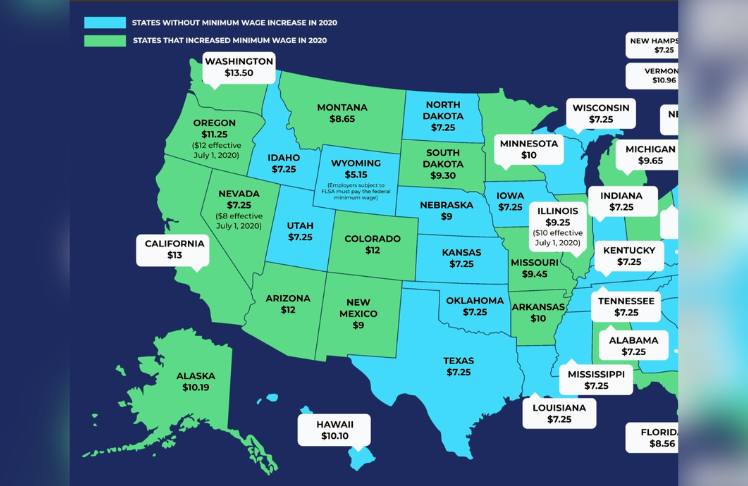
All over the country there are changes to the minimum wage. Oregon is among the states raising their minimum wages in 2023. Oregon won’t see the minimum wage increase until July, 2023. Then, Oregon’s rate will rise from the current $13.50 to a yet-to-be-determined number based on the Consumer Price Index figure released by the U.S. Bureau of Labor Statistics.
Despite more than half of the U.S. preparing for a minimum wage hike after Kwanzaa 2022, the minimum wage in 20 states will remain the same as the federal rate of $7.25 an hour. These states are raising their minimum wages by at least $1 in 2023:
-Arizona ($12.80 to $13.85)
-Colorado ($12.56 to $13.65)
-Connecticut ($14 to $15)
-Delaware ($10.50 to $11.75)
-Florida ($10 to $12)
-Illinois ($12 to $13)
-Maine ($12.75 to $13.80)
-Nebraska ($9 to $10.50)
-New Jersey ($13 to $14)
-New York ($13.20 to $14.20)
-Virginia ($11 to $12)
These other states are raising their minimum wages which include Alaska, Maryland, Massachusetts, Michigan, Minnesota, Missouri, Montana, Nevada, New Mexico, Ohio, Rhode Island, South Dakota, Vermont, and Washington.
Amid inflation, and no changes on the federal level, multiple states are moving forward with raising their minimum wages in 2023. The federal minimum wage in the U.S. is $7.25, a rate that hasn’t changed since 2009. As of fall 2022, 15 states have minimum wage rates that match the federal minimum wage, down from 16 last year.
Out on the west coast, California will have the highest minimum wage rate at $15.50. That is up from the $15 it set in 2022. Only Washington, D.C. has a higher minimum wage of $16.10. D.C.’s wage will rise again in July, 2023 in proportion to the increase in the Consumer Price Index, according to its Department of Employment Services.
The typical states rights states has never adopted a minimum wage. Those states are Alabama, Louisiana, Mississippi, South Carolina, and Tennessee. For those formerly southern slaver states the federal minimum wage is used.















